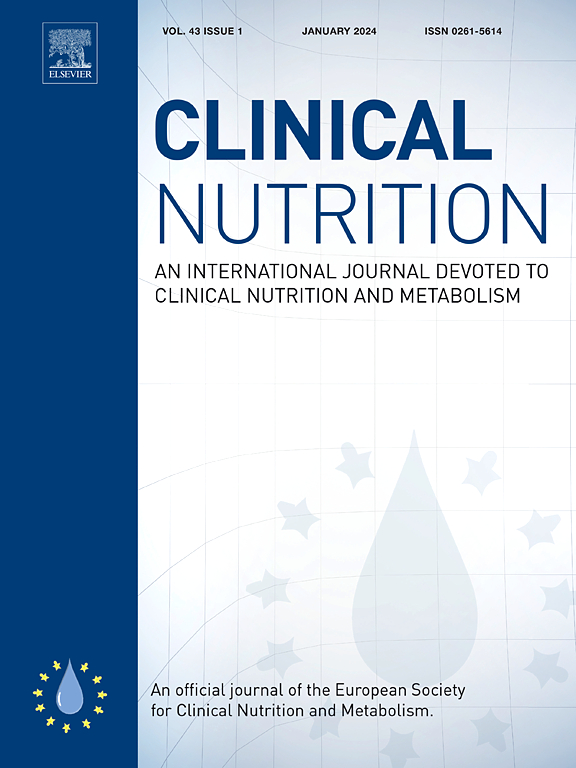Characterization of metabolomic associated with pancreatic cancer patients with overweight and obesity
IF 7.4
2区 医学
Q1 NUTRITION & DIETETICS
引用次数: 0
Abstract
Background and aims
The near equal incidence and mortality rates of pancreatic cancer, combined with projections that by 2050 pancreatic cancer will be the second-most fatal cancer, underscore the need to identify patients with early disease and thus interrupt this trajectory. Obesity, weight gain and waistline have been implicated in increasing the risk of pancreatic cancer. Factors such as inflammation, insulin resistance, and changes in intestinal microbiome have been suggested to be involved in obesity. Although metabolomic analyses of pancreatic cancer patients have established correlations between phospholipids, lysophospholipids with treatment outcomes, the association between metabolites, obesity, and pancreatic cancer remains largely understudied. We hypothesized that global metabolomic profile of obese and overweight pancreatic cancer patients will be different compared with healthy weight subjects with no cancer.
Methods
Global metabolic profiles were determined in obese and overweight pancreatic cancer patients compared with healthy weight subjects using ultrahigh performance liquid chromatography-tandem mass spectroscopy.
Results
Analysis of the data using the Benjamini & Hochberg method to control the false discovery rate revealed statistically significant changes in branched chain amino acids, lipid metabolites including monoacyl glycerol, and fructose in overweight/obese pancreatic cancer patients relative to healthy weight.
Conclusion
Our findings suggest that metabolomic pathways as potential targets for high-risk pancreatic cancer patients.
胰腺癌超重和肥胖患者的代谢组学特征
背景和目的胰腺癌的发病率和死亡率几乎相等,再加上到2050年胰腺癌将成为第二大致命癌症的预测,强调需要识别早期疾病患者,从而中断这一轨迹。肥胖、体重增加和腰围增加与胰腺癌的风险增加有关。炎症、胰岛素抵抗和肠道微生物群变化等因素被认为与肥胖有关。虽然胰腺癌患者的代谢组学分析已经建立了磷脂、溶血磷脂与治疗结果之间的相关性,但代谢物、肥胖和胰腺癌之间的关系仍未得到充分研究。我们假设肥胖和超重胰腺癌患者的全球代谢组学特征与没有癌症的健康体重受试者相比将有所不同。方法采用超高效液相色谱-串联质谱法测定肥胖和超重胰腺癌患者的整体代谢谱,并与健康体重者进行比较。结果:运用Benjamini &;Hochberg方法控制错误发现率显示,超重/肥胖胰腺癌患者的支链氨基酸、脂质代谢物(包括单酰基甘油)和果糖相对于健康体重有统计学意义的变化。结论我们的研究结果提示代谢组学途径是高危胰腺癌患者的潜在靶点。
本文章由计算机程序翻译,如有差异,请以英文原文为准。
求助全文
约1分钟内获得全文
求助全文
来源期刊

Clinical nutrition
医学-营养学
CiteScore
14.10
自引率
6.30%
发文量
356
审稿时长
28 days
期刊介绍:
Clinical Nutrition, the official journal of ESPEN, The European Society for Clinical Nutrition and Metabolism, is an international journal providing essential scientific information on nutritional and metabolic care and the relationship between nutrition and disease both in the setting of basic science and clinical practice. Published bi-monthly, each issue combines original articles and reviews providing an invaluable reference for any specialist concerned with these fields.
 求助内容:
求助内容: 应助结果提醒方式:
应助结果提醒方式:


